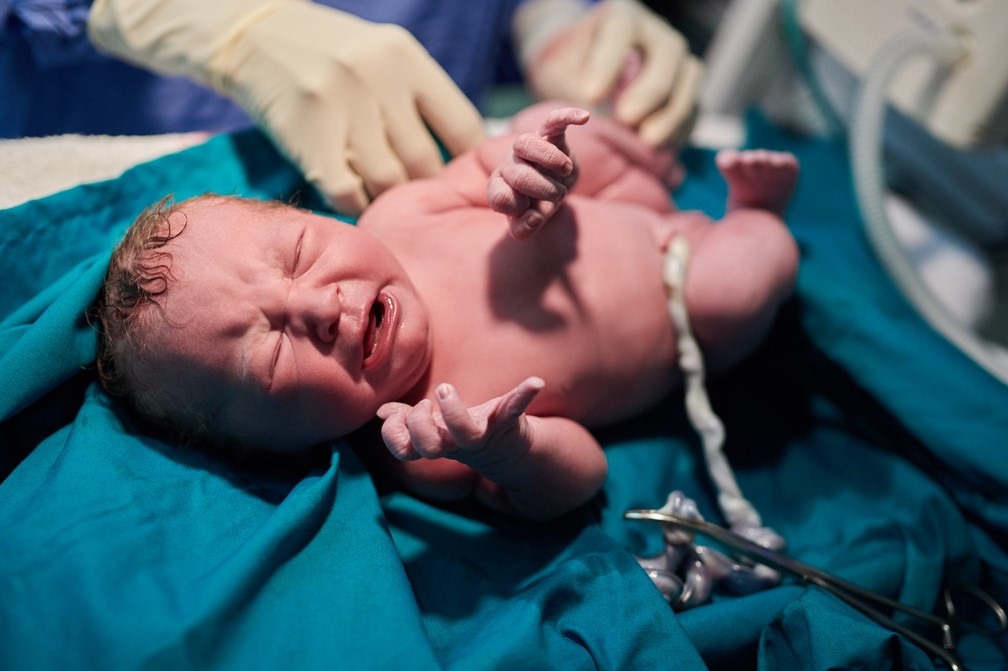
How common is brain damage at birth?
Occasionally, even if the circumstances during pregnancy seem normal, catastrophic injuries can still occur. Though uncommon, brain injuries can happen shortly, before, during or after birth, so it’s important to raise awareness for mothers and staff in neonatal wards
What is brain damage?
Brain damage occurs when brain cells are harmed or destroyed.
The most common type of brain damage in new-born babies is called hypoxic-ischemic encephalopathy, known as HIE.
It occurs when the oxygen supply to the baby’s brain is reduced for an extended period, when brain cells start to die.
Generally, the longer the shortage of oxygen, the more severe the injury.
What are the signs of brain damage in new-born babies?
Brain damage symptoms are usually obvious immediately after birth but will vary depending on how severe the injury might be.
In mild cases, symptoms frequently resolve within a few weeks.
In mild to moderate cases, midwives and nurses might notice:
- Muscle stiffness and abnormal tendon reflexes in the first few days
- Feeding problems and extreme irritability
- Excessive sleeping or crying
- Lack of muscle tone
- Inability to grasp and poor sucking reflex
- Seizures, typically within the first few days
If a new born is severely affected by a brain injury, extreme seizures are common.
Babies also might be unresponsive to external stimulus, suffer from irregular breathing, and show abnormal heart rate and blood pressure.
These effects might lead to cardiorespiratory failure, which can be fatal.
Is there any treatment for brain injury in babies?
As soon as any signs of HIE have been confirmed in a new born, medical staff refer to the method of body and head cooling – known as therapeutic hypothermia.
This aims to bring the baby’s core temperature below normal levels soon after birth, slowing down the cellular damage process occurring within the brain.
In turn, the long-term impact is minimised.
However, existing damage to the brain is permanent and unfortunately cannot be repaired by any medical method.
As they grow older, children might take medication or undergo therapy to help manage the effects of HIE.
Affected families might choose to work closely alongside brain injury solicitors for lifelong financial support and justice, especially if the injury was the result of negligent actions by staff.
How does brain damage occur at birth?
Brain damage from a birth injury can happen before, during, or shortly after birth.
HIE is caused by loss of blood flow and therefore oxygen into the baby’s developing brain.
This is known as hypoxia for partial reduction of oxygen supply.
Without oxygen, cells inside the brain rapidly start to break down and die.
The most common causes of oxygen deprivation include:
- Umbilical cord issues including twists, compressions, or pinches
- Birth canal delays
- Traumatic delivery
- Separation of the placenta
How common are brain injuries at birth?
While these types of injury are relatively rare, it’s crucial to know the risks.
Being able to spot the signs means that early intervention could reduce further damage to the brain, improving the long-term outlook for the baby.
Read Also
Emergency Live Even More…Live: Download The New Free App Of Your Newspaper For IOS And Android
The Stages Of Childbirth, From Labour To Birth
Emergency-Urgency Interventions: Management Of Labor Complications
APGAR Test And Score: Assessing The Health Status Of An Newborn
Shaken Baby Syndrome: The Very Serious Damage Of Violence On The Newborn Child
Why Are Hiccups So Common In Newborns And How Can They Be Overcome?
Seizures In The Neonate: An Emergency That Needs To Be Addressed
Emergency-Urgency Interventions: Management Of Labor Complications
What Is Transient Tachypnoea Of The Newborn, Or Neonatal Wet Lung Syndrome?
Tachypnoea: Meaning And Pathologies Associated With Increased Frequency Of Respiratory Acts
Pregnancy: What It Is And When Structural Ultrasound Is Necessary
Pathologies In Pregnancy: An Overview
Preeclampsia And Eclampsia In Pregnancy: What Are They?
Transvaginal Ultrasound: How It Works And Why It Is Important
Miscarriage: Causes, Diagnosis And Treatment
Placenta Previa: Definition, Causes, Risk Factors, Symptoms, Classification
Miscarriage: Medical And Psychological Aspects In The Approach To The Patient
Bluish Color Of Baby’s Skin: Could Be Tricuspid Atresia
Heart Disease: The Atrial Septal Defect
Baby Blues, What It Is And Why It Is Different From Postpartum Depression
What Is Postpartum Depression?
How To Recognise Depression? The Three A Rule: Asthenia, Apathy And Anhedonia
Postpartum Depression: How To Recognise The First Symptoms And Overcome It
Postpartum Psychosis: Knowing It To Know How To Deal With It
Childbirth And Emergency: Postpartum Complications
Emergency-Urgency Interventions: Management Of Labor Complications
Seizures In The Neonate: An Emergency That Needs To Be Addressed
Diagnostic And Operative Hysteroscopy: When Is It Necessary?
Techniques And Instruments For Performing Hysteroscopy
The Use Of Outpatient Hysteroscopy For Early Diagnosis
Utero-Vaginal Prolapse: What Is The Indicated Treatment?
Pelvic Floor Dysfunction: What It Is And How To Treat It
Pelvic Floor Dysfunction: Risk Factors
Salpingitis: Causes And Complications Of This Fallopian Tube Inflammation
Hysterosalpingography: Preparation And Usefulness Of The Examination
Gynaecological Cancers: What To Know To Prevent Them
Total And Operative Hysterectomy: What They Are, What They Involve
Vulvodynia: What Are The Symptoms And How To Treat It
What Is Vulvodynia? Symptoms, Diagnosis And Treatment: Talk To The Expert


